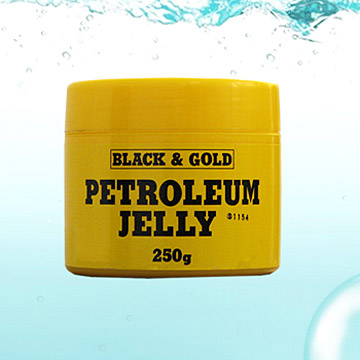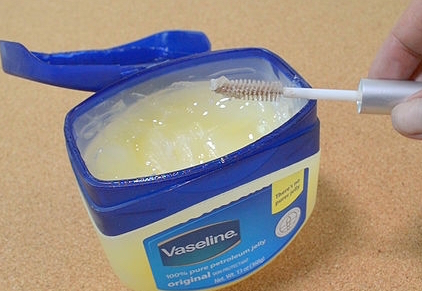You may have seen it sitting in the aisle at your local drugstore and wondered, “What is petroleum jelly?” Petroleum jelly is a type of semisolid hydrocarbon that has a wide range of uses, from skin care to hair care. It’s made from a by-product of the oil refining process, which is why it’s sometimes also called petrolatum. In this blog post, we’ll take a closer look at some of the ways you can use petroleum jelly and why it’s such an amazing product. The benefits of petroleum jelly for the skin are plentiful, and this wonder jelly is easy on the wallet as well!

Is Petroleum Jelly the Same as Vaseline?
Yes! Petroleum jelly IS the same as Vaseline – Vaseline is simply the name brand of a popular (if not THE most popular) brand of petroleum jelly. So whether you pick up generic petroleum jelly or Vaseline – it’s really all the same.
The Benefits of Petroleum Jelly for the Skin
Skin Care
One of the most popular uses for petroleum jelly is as a moisturizer. It can be particularly helpful for people with dry skin or conditions like eczema. Petroleum jelly works to lock in moisture by creating a barrier on the skin. It’s also non-comedogenic, meaning it won’t clog your pores, and it’s gentle enough to use on babies’ skin. It also makes for a great face mask to help moisturize dry skin.
Hair Care
Petroleum jelly can also be used as a hair product. People with frizzy hair often use it as a leave-in conditioner or hair styling product. You can also use it to tame flyaways or give your hair shine. Simply apply a small amount to your hands and run them through your hair.
Makeup Remover
Petroleum jelly can also be used as an all-natural makeup remover. Simply apply it to a cotton pad and gently wipe away your makeup, no need for harsh chemicals!
Soothe Sunburns
If you’ve been out in the sun too long and are starting to turn red, petroleum jelly can help soothe your sunburn. Apply it generously to the affected area and allow it to absorb into your skin for relief from pain and itching.
Healing Minor Cuts
Got a minor cut? Dab some petroleum jelly on it to help speed up the healing process by keeping bacteria out and moisture in.
Is Petroleum Jelly Harmful for the Skin?

The answer is absolutely not! Petroleum jelly has been scientifically shown to cure many skin ailments, including dry skin as well as irritated and burnt skin. In fact, it’s one of the safest products you can use on your skin because it’s also very unlikely to give an allergic reaction.
How Else Can Petroleum Jelly Be Used?
It Helps Heal Cuts and Scrapes
One of petroleum jelly’s most common uses is as an ointment for minor cuts and scrapes. When applied to wounds, it forms a barrier between the wound and the air, which helps to speed up the healing process by preventing scabs from forming. It also helps to keep the area moisturized, which reduces itching and discomfort.
It Soothes Dry Skin
If you suffer from dry skin, petroleum jelly can be a saving grace! When applied to dry patches, it creates a barrier between your skin and the outside world that helps to lock in moisture. It can also help to soothe irritation caused by conditions like eczema.
It Treats Cold Sores
Cold sores are pesky little things that seem to pop up at the most inopportune times. Petroleum jelly can help to shorten the duration of cold sores by keeping them moist and protected from irritants. Simply apply it to the affected area several times a day until the sore has healed.
It Can Be Used as a Natural Lip Balm
Petroleum jelly makes an excellent natural lip balm! In addition to keeping your lips moisturized, it can also help to protect them from sun damage. Simply apply a thin layer of petroleum jelly to your lips before heading outdoors. Reapply as needed throughout the day.
The History of Petroleum Jelly
You might be surprised to learn that petroleum jelly, that ubiquitous white ointment found in almost every medicine cabinet, has been around for over 150 years. It was originally used to treat a variety of skin ailments and continues to be an effective moisturizer for dry skin. Here’s a brief history of this household staple.
In 1859, Robert Chesebrough, a 22-year-old chemist from Brooklyn, New York, traveled to Titusville, Pennsylvania in search of a new career in the booming oil industry. After witnessing workers trying to stop leaks in their crude oil rigs with a substance known as “rod wax,” Chesebrough was inspired to investigate further. He eventually discovered that by distilling the rod wax—a process that took up to six hours—he could create a substance with remarkable healing properties. He named this new substance “petroleum jelly” and patented it in 1872.
At first, petroleum jelly was only used by the oilrig workers who had inspired Chesebrough’s invention. But after hearing reports of the substance’s miraculous ability to heal burns and cuts, people began clamoring for it. Chesebrough soon began selling it in small glass jars for just one cent each. As demand continued to grow, he established the Chesebrough Manufacturing Company (now known as Vaseline) and began mass-producing petroleum jelly in 1880.
During World War I, petroleum jelly became widely used as a topical antibiotic ointment and continues to be used for this purpose today. In addition, it is still commonly used as a moisturizer for dry skin and lips and has even found its way into some cosmetics formulations.
Petroleum Jelly is more than just an inexpensive alternative to name-brand moisturizers—it’s actually one of the most versatile products in your medicine cabinet! So don’t wait until your skin is parched or you have a minor wound before reaching for the Vaseline—incorporate it into your beauty routine today and enjoy softer, smoother skin all winter long. As you can see, there are many ways you can use petroleum jelly beyond just keeping your skin moisturized! Have you ever used petroleum jelly for any of these purposes? What are some other ways you like to use it? Let us know in the comments below!
